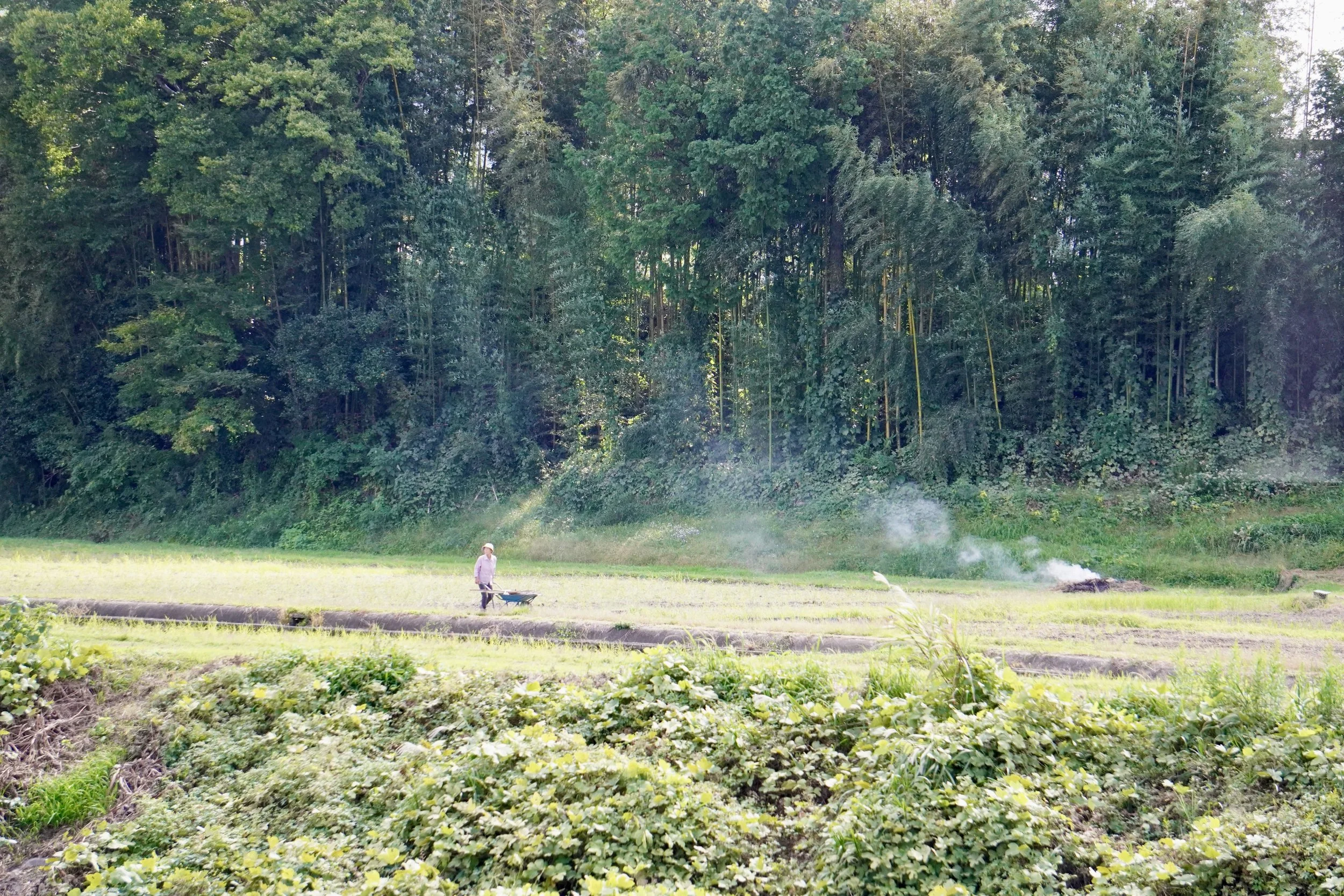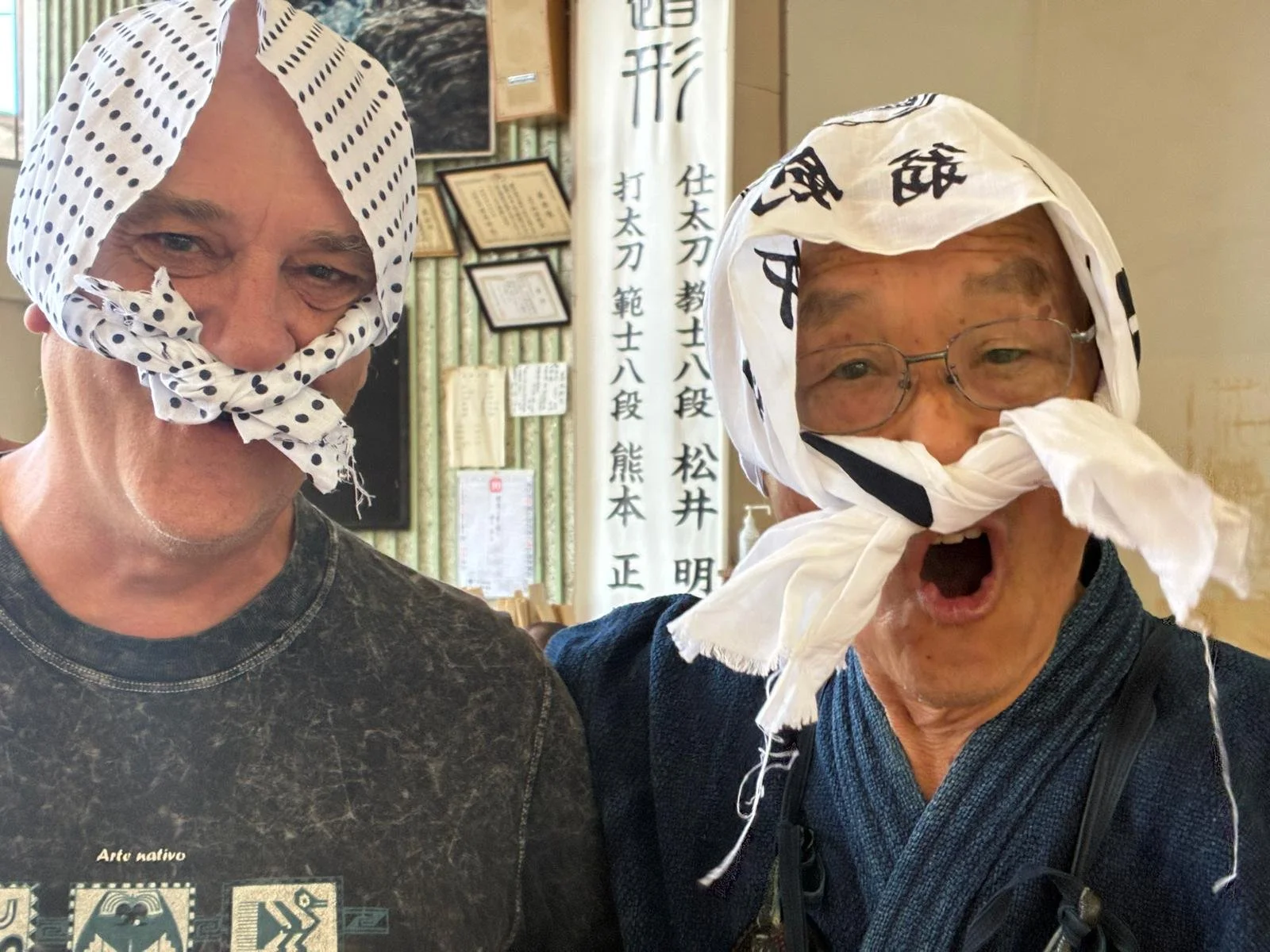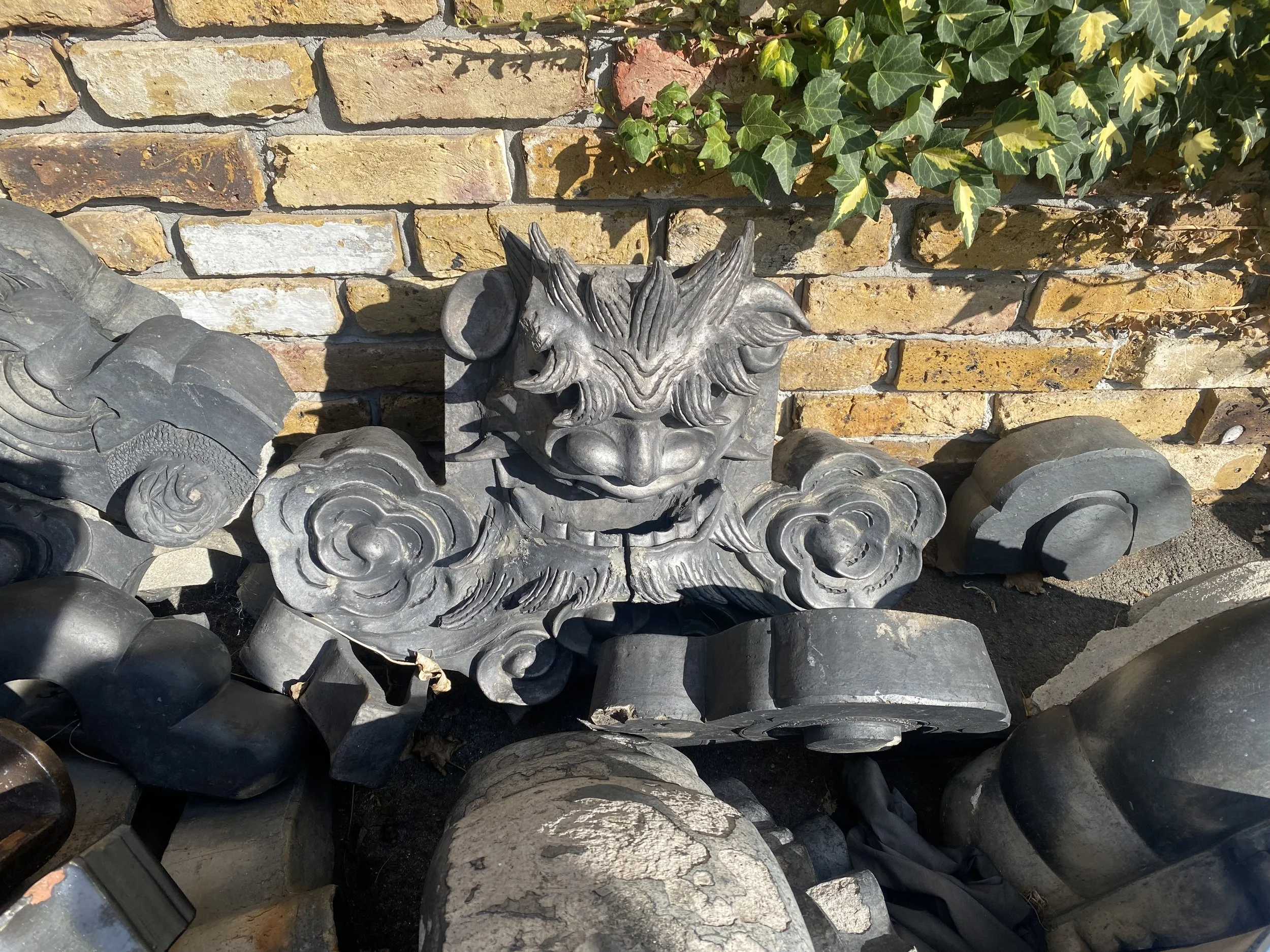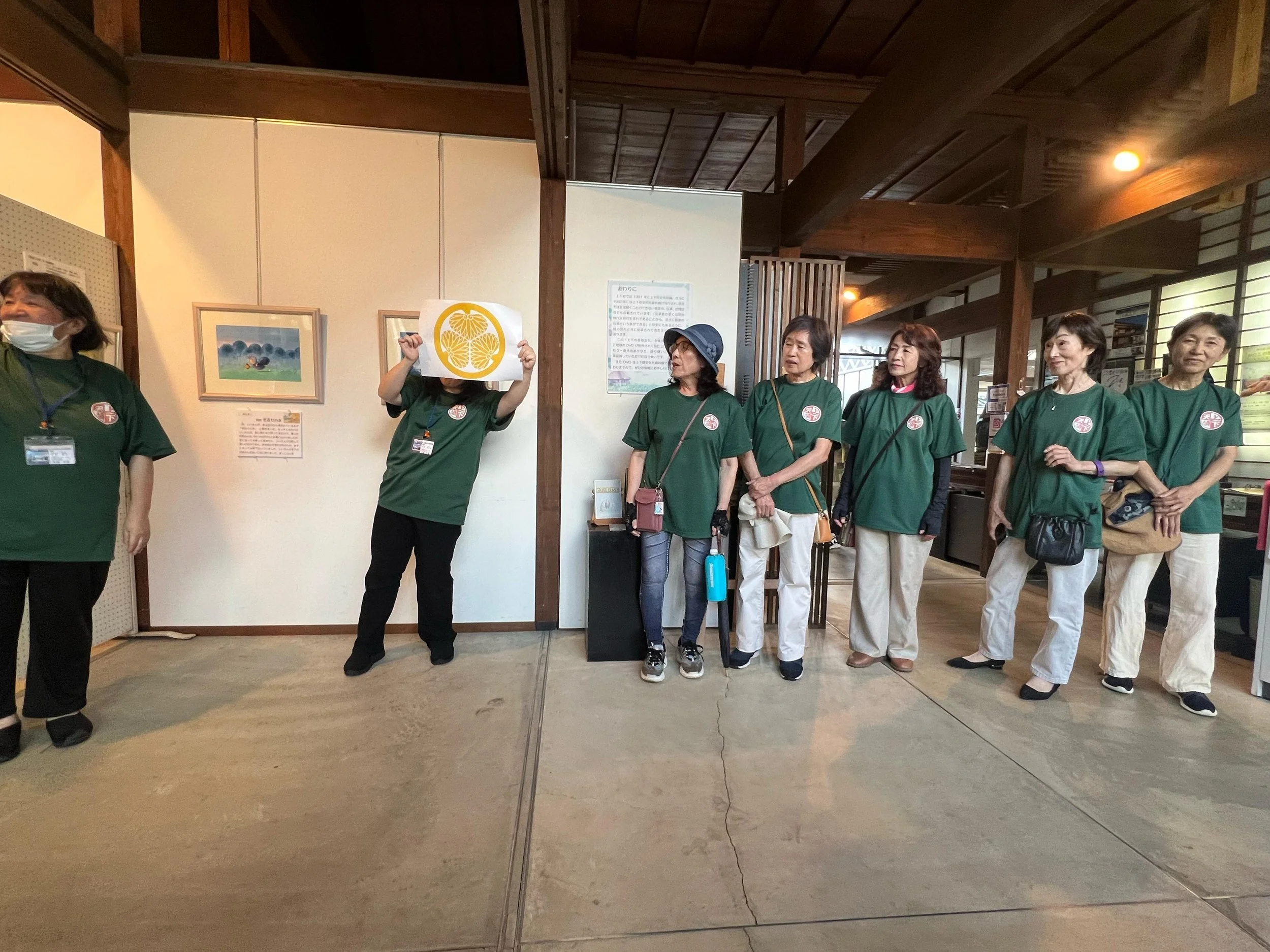Joge 上下
13th October
Our last day of the tour started with a two and a half hour bus ride into the countryside to a small village called Joge which translates to English as Up down. The Japanese name written in Kanji is the simplest yet and makes you think that the calligrapher had a hangover on the day that the word was first made up.
Decoding written Japanese is very challenging as not only are there in excess of 2500 characters, there are also three types of script used:
First off there is Kanji. This script originated in China and is thought to have came to Japan via Korea at around the fifth century AD. Prior to this time there wasn’t any written Japanese. (I’ve asked a number of people about this and wonder how the country’s pre history was recorded but haven’t received a satisfactory answer yet). The problem with this is that the Chinese language and Japanese language are really not the same and so a lot of the written characters that were adopted didn’t really fit.
Second there is Hiragana. A phonetic script that was invented to make sense of the Chinese gobbledygook squiggles and fill in the grammar for the bits that were missing.
Third there is Katakana. I can’t really work out why the early linguistic scholars (or the more recent come to that), couldn’t just invent some more Hiragana to accommodate new foreign words but evidently that was too tricky so this third script was invented. Also phonetic but with a whole new bunch of symbols even for the same letters as Hiragana. So for example the letter ‘o’ in Hiragana is お and in Katakana it’s オ.
Just to make it almost impossible to read anything without a lifetime of learning, all three scripts are mixed up together in words and sentences: Completely bonkers translates to 完全タ狂っている these characters in order are Kanji, Kanji, Katakana, Kanji, Hiragana, Hiragana, Hiragana , Hiragana.
Luckily most signs and menus have some English on them and for those that don’t there’s always Google translate!
The small town of Joge with 3000 or so inhabitants is chosen for inclusion in the tour by Inside Japan to give a flavour of rural life off the gringo trail as well as to bring some sustainable tourism prosperity to a smaller community. It is a place so far off the beaten track that it does not feature at all in The Lonely Planet.
On arrival we were greeted by a gaggle of tour guides, all local, all women, all dressed in uniform and all very very keen to practice their English. They were charming.
It made a change to visit a temple without hoards of other tourists as well as experiencing the genuine enthusiasm exuding from our hosts.
Hidden away in the loft of one temples were these monks who, after reaching enlightenment three or four hundred years ago, had decided to come back to Joge to give spiritual guidance to the living rather than follow the path to the next life. Not sure that they all look too happy with the choice in hindsight.
We went to a wooden playhouse built in 1925. Patrick instructed us to act as though we had never seen anything like it before!
We then watched the local Kendo club in action and were encouraged to join in. There are some photos of that but way too embarrassing to post anything even to the limited audience here.
There was a bit of hanky play afterwards though.
If you fancy relocating to the simple life, £50k will get you the most expensive pad at this estate agent.
Some fine local buildings of interest.
And an architectural salvage yard to die for.
Patrick starting to wind down at the end of the tour.
Our group of ladies that do tours lined up to say goodbye in the small museum. A couple of them had their sons with them who were learning English. I made sure to tell them that I liked blue shoes and they seemed happy!
The small town had been interesting rather than fascinating and it felt like a bit of a filler stop on the last day of the tour. I can’t really see it featuring in TLP anytime soon and if it did the entry might just read ‘Joge, a bit up and down’.
We set off again in the bus to Fukuyama and our first ride on the Shinkansen, Japan’s famous bullet train network.
Through trains shot by on the two central tracks which were angled to add a bit of drama. There’s probably something to do with keeping the trains on the track too but you’d have to ask my brother about that.
We board and shot off to Kyoto.
Farewell speeches and smiling faces before going out for the last group supper.
And then, quite suddenly, everyone dispersed and the tour was finished. We were quite sad really as the whole thing had exceeded our expectations and we had got on really well with a vast majority of our fellow travellers. Patrick had been a fantastic tour guide and had gone beyond his remit to make sure that we had all received the best experiences possible from the trip. We were looking forward to the rest of our trip around Japan but knew that it would not be the same.












